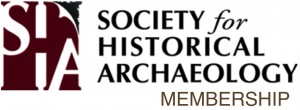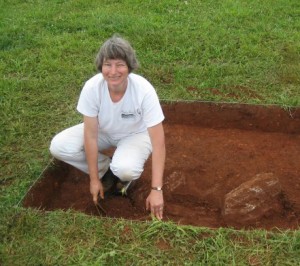 Over the coming months, we’ll be bringing you entertaining interviews with a diverse array of your fellow SHA members. Meet a member for the first time or learn something about a colleague that you never knew before. This blog series also offers current members an opportunity to share their thoughts on why SHA membership is important (Camaraderie? Professional service? Exchange of ideas in conference rooms and beyond? You tell us!). If you would like to be an interviewee, please email the Membership Committee Social Media Liaisons Eleanor Breen (ebreen@mountvernon.org) or Kim Pyszka (kpyszka@aum.edu).
Over the coming months, we’ll be bringing you entertaining interviews with a diverse array of your fellow SHA members. Meet a member for the first time or learn something about a colleague that you never knew before. This blog series also offers current members an opportunity to share their thoughts on why SHA membership is important (Camaraderie? Professional service? Exchange of ideas in conference rooms and beyond? You tell us!). If you would like to be an interviewee, please email the Membership Committee Social Media Liaisons Eleanor Breen (ebreen@mountvernon.org) or Kim Pyszka (kpyszka@aum.edu).
An Interview with Dr. Barbara Heath, Associate Professor of Anthropology at the University of Tennessee, Knoxville and the Chair of the SHA Membership Committee
 What is the first site you worked on? What is the last one (or current one)?
What is the first site you worked on? What is the last one (or current one)?
I worked with artifacts from a number of sites when I was a freshman and sophomore at William and Mary as a volunteer for the Virginia Research Center for Archaeology–I remember working with the collections from Corotoman and some of the Kingsmill sites. My first fieldwork was at Shirley Plantation in Charles City County in the summer of 1980. The last site I worked on with my students and friends was Coan Hall, a 17th-century site on the Northern Neck of Virginia in December (2013), and where I hope to continue working over the next few years. I’m also wrapping up work soon at Indian Camp, an 18th-century plantation, and 19th-century tavern, store and farm in the eastern Virginia piedmont. http://web.utk.edu/~bheath2/
Fieldwork or labwork?
I love them both, but fieldwork just a bit more. I like the physicality of fieldwork as well as the mental challenges, I love to be outside, and fieldwork has brought me to some really beautiful places.
What are you currently reading?
Ian Hodder’s Entangled, The Book Thief, and the Statutes at Large of Great Britain (each volume a real page turner) to try to understand customs laws in the 18th century.
What did you want to be when you grew up?
An archaeologist–I told my second grade teacher that’s what I would do and put it as a future career in my high school yearbook.
Why are you a member of SHA?
I’m a historical archaeologist–SHA is where my professional allegiance lies. SHA is important in so many ways–providing a venue for archaeologists to get together and share ideas, publishing Historical Archaeology, keeping us up-to-date with news, research and resources on the website and in the newsletter, and, for US archaeologists, serving an advocacy role for archaeology and historic preservation legislation. I belong to other professional organizations as well, but SHA has the biggest impact while being focused on the research areas that interest me most.
At what point in your career did you first join SHA?
I joined SHA during my first year of graduate school at Penn and attended my first conference in 1983 in Williamsburg.
How many years have you been a member (approximately)?
31 years–YIKES!
Which benefit of belonging to SHA do you find the most beneficial?
I look forward to the conference every year (even when it’s cold and miserable) to meet up with old friends, meet new people, and hear about the interesting work that’s going on around the world. I’ve seen many places that I wouldn’t otherwise have had the chance to visit by attending the conference and have benefitted personally and professionally from getting to know many of the great people who belong to SHA.

